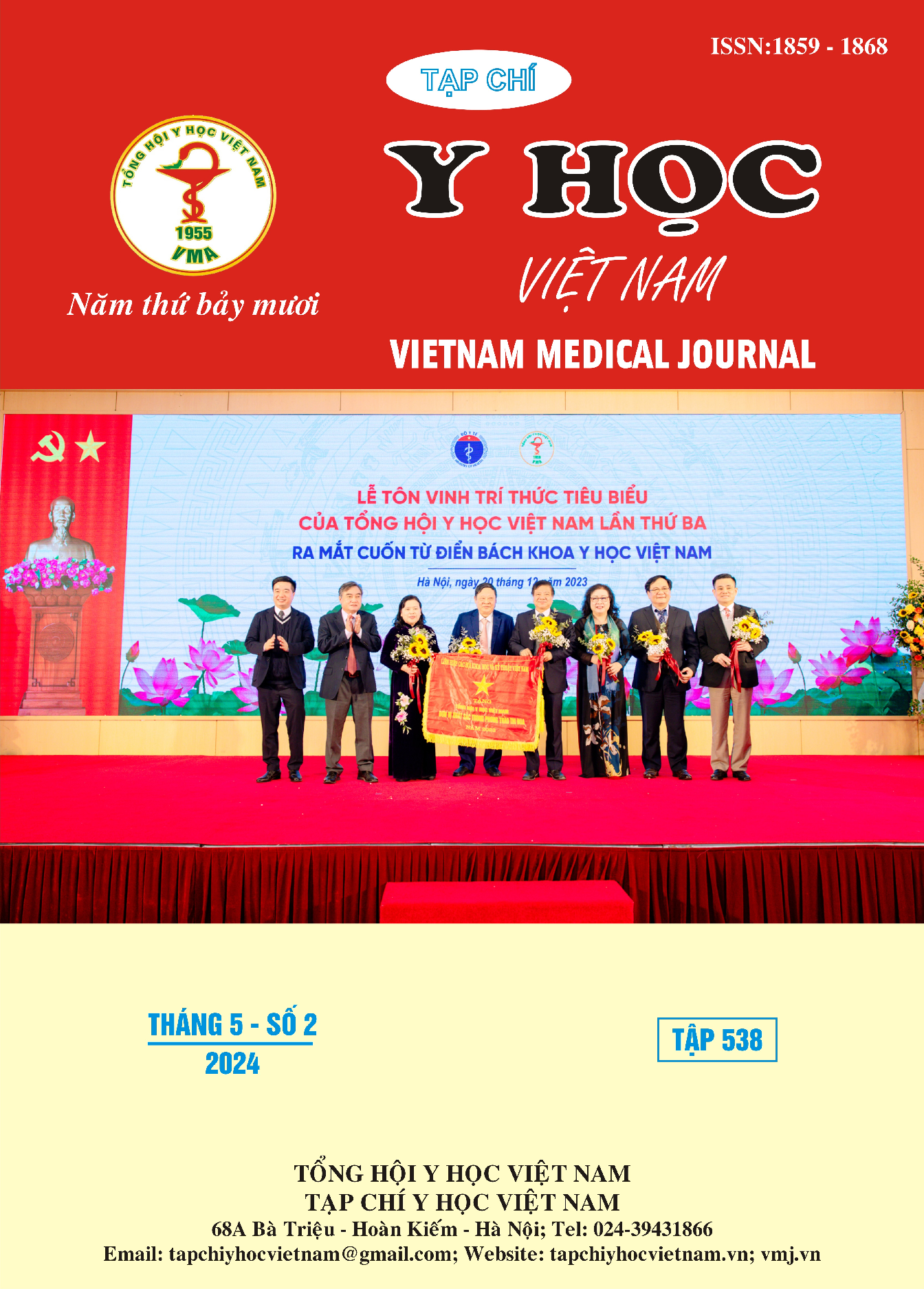APPLICATION OF NUCLEIC ACID TEST TO DETERMINE THE PREVALENCE OF OCCULT HEPATITIS B INFECTION IN BLOOD DONORS IN NATIONAL INSTITUTE OF HEMATOLOGY AND BLOOD TRANSFUSION, PERIOD 2021-2023
Main Article Content
Abstract
Occult HBV Infection (OBI) remains a potential threat to blood transfusion safety, especially in developing countries. Nevertheless, there is no data available on the magnitude of occult HBV infection among blood donors at the National Institute of Hematology and Blood Transfusion (NIHBT). Objectives: (1) Determine the rate of OBI in blood donors at the NIHBT and (2) Conduct a survey on the titre of anti-HBs in OBI blood donors. Subjects: The research subjects for first goal were 625,548 blood donors with HBsAg(-) from 01/01/2021 to 30/06/2023 and the research subjects of second goal were 187 OBI donors. Method: Cross-sectional descriptive study. Results: The rate of OBI blood donors at the NIHBT in the period 2021-2023 is 0.06%. Among OBI blood donors: the average age was 40 (IQR: 33 - 49), male accounted for 61.0% and female accounted for 39.0%; First-time blood donors accounted for 44.0% and repeat blood donors accounted for 56.0%. There were 59.9% of OBI blood donors negative for anti-HBs, 26.7% of blood donors had anti-HBs antibody titers in the range of 10-100 IU/mL, with a median concentration of 33.6 (IQR: 16.2 - 56.6) IU/mL, only 13.4% of blood donors had anti-HBs concentrations above 100 IU/mL with a median concentration of 282.0 (IQR: 131 - 526.5) IU/mL.
Article Details
References
2. Manoochehr Makvandi, Update on occult hepatitis B virus infection. World J Gastroenterol, 2016. 22(39): p.8720-34.
3. Reesink HW, Engelfriet CP, Henn G, and Mayr WR, Occult hepatitis B infection in blood donors. Vox Sang, 2008. 94: p.153-166.
4. Zheng X, Ye X, Zhang L, Wang W, Shuai L, Wang A, Zeng J, Candotti D, Allain JP, and Li C, Characterization of occult hepatitis B virus infection from blood donors in China. J Clin Microbiol 2011. 49: p.1730-37
5. Xianlin Ye, Tong Li, Xiaoxuan Xu, Peng Du, Jingeng Zeng, and Weigang Zhu, Characterisation and follow-up study of occult hepatitis B virus infection in anti-HBc positive qualified blood donors in sourthern China. Blood Transfus 2017. 15: p.6-12.
6. Bộ Y tế, Thông tư Hướng dẫn hoạt động truyền máu, Số 26/2013/TT-BYT. 2013.
7. Nguyễn Thị Thanh Dung và cộng sự, Đánh giá kết quả xét nghiệm sàng lọc HBV, HCV, HIV, giang mai ở đơn vị máu tiếp nhận tại Viện Huyết học - Truyền máu Trung ương giai đoạn 2015-2019. Tạp chí Y học Việt Nam, 2020. 496: p.118-127.
8. Magdy EL Ekiaby, Nico Lelie, and Jean Piere Alllain, Nucleic Acid Testing (NAT) in high prevalence - low resorce settings. Biologicals, 2010. 38(1): p.59-64.
9. Tran Thanh Tung, Jurgen Schmid, Vu Xuan Nghia, Le Chi Cao, Le Thi Kieu Linh, and Ikrormi Rungsung, Low Risk of Occult Hepatitis B Infection among Vietnames Blood Donors. Pathogens. 2022,11,1254: p.1-10.
10. Anna S. Nishiya, José E. Levi, Cesar de Almeida Neto, Steven S. Witkin, Suzetec C. Ferreira, and Leda Bassit, Occult and active hepatitis B virus detection in donated blood in Sao Paulo, Brazil. Transfusion, 2020. 61: p.1495-1504.
11. Michelle Spaan, Mattew Bruce, Kosh Agarwall, and Ivana Carey, The role of anti-HBs in hepatitis B reactivation during direct-acting antiviral therapy for chronic hepatitis C. Antiviral Therapy 2018. 23: p.539-42.


